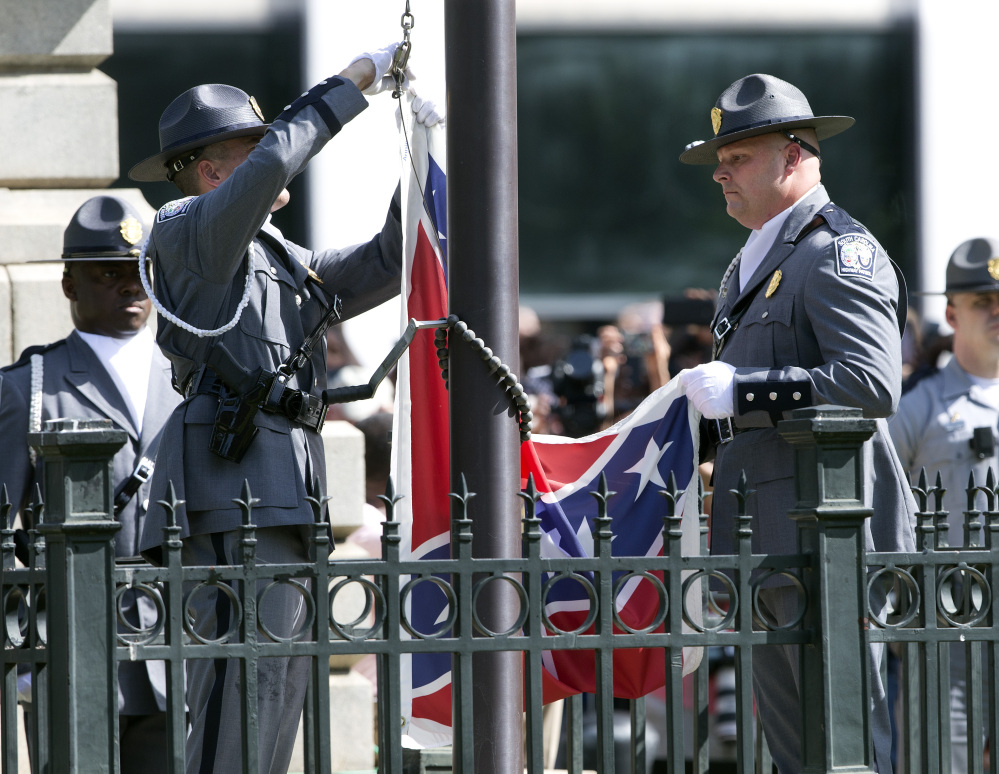We are a country that loves law and order, but in our stories and songs, we glorify the people who make their own rules. Sometimes it’s just more fun to be a rebel.
That’s what the Confederate battle flag has come to represent for many white Americans, North and South. It was the flag of “The Dukes of Hazzard,” the Charlie Daniels Band, Lynyrd Skynyrd and NASCAR. To most, it represents a mischievous streak, not a treasonous plot against the United States or a desire to bring back slavery.
But the rebel flag carries historical weight that can’t be wished away. To millions of Americans, it stands for centuries of bondage, torture, murder and rape – not to mention systemic racism, which persists in our culture. There is no innocent way to display a symbol this powerful.
What people call the Confederate flag – actually the battle flag of the Army of Northern Virginia – has become a hot-button political issue in the South, where it has been a taxpayer-supported symbol in some states since the 1950s.
Last month, a young white man, who said he hoped to start a war between the races, massacred a black pastor and eight black worshippers in a Charleston, South Carolina, church. He had taken pictures of himself surrounded by flags of the Confederacy and other racist regimes; to avoid association with his heinous act, the flag has rightly been removed from the grounds of the South Carolina Statehouse.
Once the flag and other symbols that glorify the pro-slavery cause have been removed from public buildings, displaying it becomes a matter of personal choice. Individuals can decide what images they associate with, but not what message those images convey. No one should think that they can wave a Confederate battle flag without causing pain, even if that is not the intent.
To a black American, the rebel flag stands for slavery, segregation, Jim Crow, the Ku Klux Klan and lynching. The flag was practically wiped out of American life after the Civil War, but reappeared as a symbol of Southern white backlash against the civil rights movement. Like the burning cross, the rebel flag delivered a terrorist message meant to intimidate black Americans into abandoning the fight for their rights.
Up here in Maine, it’s easy to forget that message and think of the battle flag as the personal expression of an independent, nonconformist streak. The fight against the flag can look like a case of liberal meddling – political correctness run amok. Flying the rebel flag could be seen as a sign that you won’t be told what to do.
But it’s impossible to separate the symbol from its history, any more than it would be possible to hoist a swastika flag without making a statement about the Nazis.
The battle flag has a place in museums, in history books and perhaps on the graves of soldiers who died fighting for the Confederacy. But it represents too serious a threat to be displayed casually.
It’s time for people of good will to see the flag for what it is and put it away, so that their intentions are not misunderstood.
Send questions/comments to the editors.


